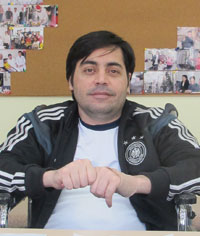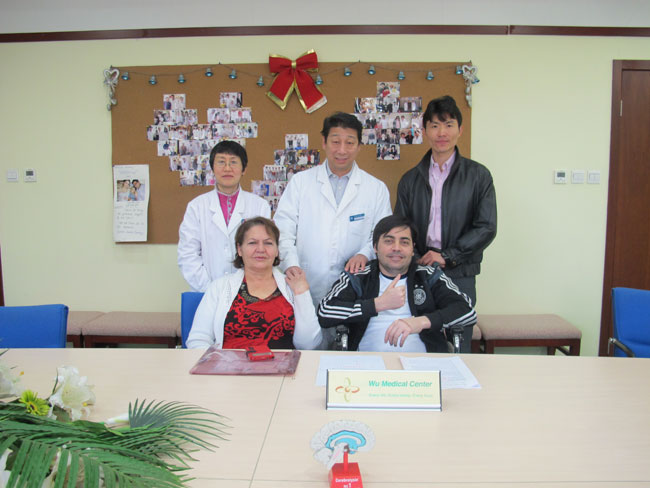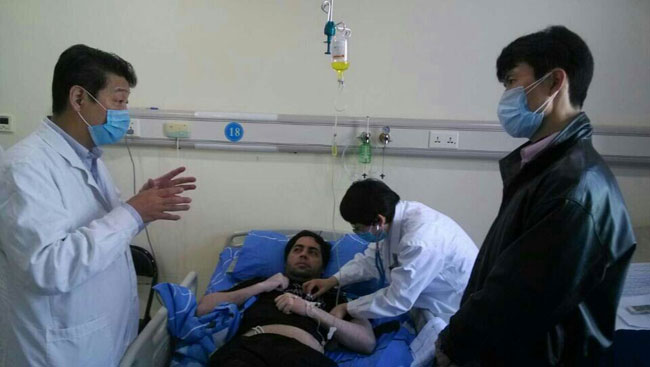Usama - Sequelae of spinal cord trauma (Venezuela) Posted on November 24, 2014
Name: Usama Abou Saada Radwan 
Sex: Male
Country: Venezuela
Age: 33 years
Diagnosis: Sequelae of spinal cord trauma
Date: October 28, 2014
Days Admitted to Hospital: 21 days
Before treatment:
The patient suffered from thoracic injury due to gunshot in December, 2012. He then lost the motor function of his trunk and legs and appeared to have sensory disorder of his upper limbs. He had surgery immediately to remove the bullet and participated in rehabilitation ever since. He sometimes takes oral medicines of Pregabalin, Alprazolam, Trimebutine and Acetaminophen. He took 3 times of ASCT (Autologous Stem Cell Transplantation) but his condition did not improve.
Since the onset of trauma, he had urinary and fecal incontinence and his weight has declined.
Admission PE:
Patient had a medium - sized body figure. A surgical scar of 15cm can be seen on his upper back. The thorax was symmetrical. The respiratory sounds in both lungs were clear, with no obvious dry or moist rales. The heart sounds were strong and the rhythm of his heartbeat was normal, with no obvious murmur in the valves. The abdomen was sunken and had no obvious masses during palpation. The liver and the spleen were normal during palpation. His lower limbs had no swollen.
Nervous System Examination:
Usama was alert and he spoke fluently. His memory, calculation and orientation abilities were normal. Both pupils were equal in size and round, the diameter was 3.0mms, both eyeballs could move flexibly and the pupils reacted normally to light stimulus. The forehead wrinkle pattern was symmetrical. The tongue was centered in the oral cavity and the teeth were shown without deflection. The neck moved normally. The muscles of four limbs had mild atrophy. The muscle strength of both upper limbs was at level 5, and its muscle tone was normal; the muscle strength of lower limbs was at level 0 and the muscle tone was much higher than normal. There were serious spasms. The reflex of middle area of abdomen could be elicited. The patellar tendon reflex of lower limbs was weaker than normal. The other physiological reflex could not be elicited. Left Babinski sign was positive. The deep and shallow senses, and the fine sensation under T1 were weaker and his body under T3 was unconscious. The finger-to-nose, rapid rotation test of both hands were normal. He could not perform the heel - knee - tibia test. The meningeal irritation sign was negative.
Treatment:
We initially gave Usama a complete examination. He received treatment to nourish his nerves, promote the restoration of neural system and improve the body circulation. He also received treatment to activate his own stem cells. They were accompanied with rehabilitation training.
Post-treatment:
After 3 weeks of treatment, patient has improved in sensory and motor function. From T1 to T3, the deep and shallow, and fine sensation are close to normal. From T3 to T4 the deep, shallow and fine sensation appeared. The vibrational sensation of anterior superior spine, ankle joints and toes appeared. The metatarsophalangeal joints of left foot appear to have autonomous movement. The muscle strength of lower limbs has improved to level 2.


